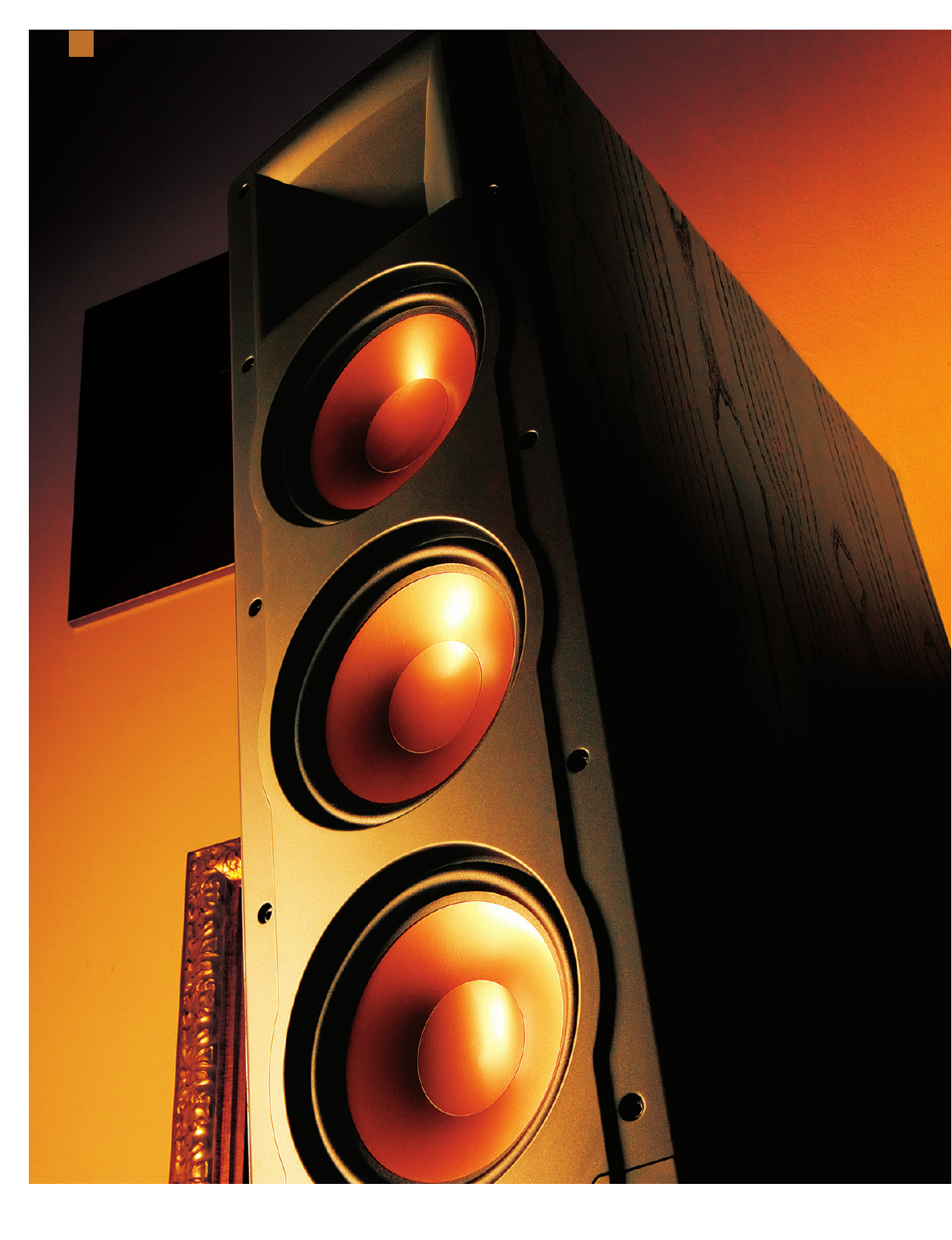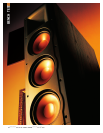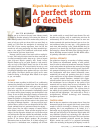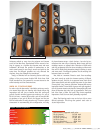
K
A perfect storm
of decibels
Klipsch Reference Speakers
Keeping you up to date on the very latest industry trends
is something we take seriously. From among the dozens of
audio-visual products that hit the market every season, we
want to help you pick out those which are most likely to
satisfy you, both from the standpoint of technology and
from that of pure sensory experience. Over the last few
months our non-stop prospecting has often unearthed sys-
tems on the edges of the traditional audio-visual market
and we have let you know about them.
However, we don’t want to lose touch with our audiophi-
le roots. That’s why this time around we have come back to
so-called conventional audio. Away we go – time to inspect
some high-end Klipsch speakers with Claude Latour,
Klipsch’s Quebec rep as our guide. Claude is a real connois-
seur, not only of the Klipsch brand, but also of the whole
audio-visual industry. In his own home he has set up a not
too shabby listening room. And the fact that he has chosen
only Klipsch Reference series speakers tells you a lot about
their quality. The Klipsch brand was crying out for some
hands-on testing, so we obliged. What follows is our report
to you, our readers.
THE VISIT
So there we were, my editor-in-chief and I, on a suffocating
summer’s day knocking at Claude’s front door. He welcomed
us into his air-conditioned home with open arms, sparkling
eyes and a contagious smile – a cool beginning. I don’t
quite know why, but the conversation immediately turned
to a rather curious picture hanging over the fireplace in the
library. It was an aerial photograph showing an estate with
a strange neo-gothic tower, the Magdal Tower, located in
Rennes-le-Château in the department of Aude in the south
of France. Claude told us that the estate in the picture was
the Abbey of Béranger Saunière … the very one that inspi-
red Dan Brown, author of the now ubiquitous DaVinci Code.
Claude admitted that he’s passionate about the subject …
which places him the select company of several million
other readers’ world over. I knew we were straying from our
subject, but the digression allowed us to cool down and get
our bearings after the heat outside. Once refreshed, we were
ready to get on with the real reason for our visit: an ins-
pection of the famous Klipsch speakers. We proceeded
downstairs where we found them, in all their majesty, hol-
ding court in a windowless room, completely cut off from
the outside world: an nearly ideal home theatre. The only
intruder was a slightly noisy air conditioning unit that we
unfortunately had to leave running, unless we want two
shelves crammed with precious electronic gear to do an ins-
tant meltdown before our very eyes – they generate that
much heat. After mulling it over, Claude decided that, for
purposes of our bench test, the Klipsch speakers would be
best served by a Denon DVD-3910 player running through a
Denon AVR-5805 surround receiver and BIS AUDIO cables..
all perfectly calibrated to work together.
PHYSICAL ATTRIBUTES
The guided tour began by an overview of cabinet anatomy.
The cabinets are manufactured entirely of solid particle-
board in order to reduce any unwelcome resonance. Internal
cross bracing makes the structure even more rigid and helps
anchor the components. Three rear-firing ports give the RF-
63’s generous breathing room. As well, they benefit from a
new configuration with three 165mm Cerametallic cones,
maximizing the travel and producing bass that is always
under control even at high volume. Cerametallic is a paten-
ted, specially treated aluminum, anodized with copper-
coloured ceramic dust on both outer surfaces. I noted that
the manufacturer has not skimped on the quality of the
materials and has clearly aimed at ease of movement. The
components are fixed to an elastomer flange in order to
move with considerable amplitude. “The concave dome in
the middle of each speaker has been specially designed to
be both stiff and lightweight,” Mr. Latour told us. This is a
straightforward, efficient technology with interesting
absorption qualities.
TRACTRIX HORNS
Next he drew our attention to the tweeter horns. From time
immemorial people have cupped their hands around their
mouths in order to be heard at a distance. In fact, strictly
speaking, this is not amplification at all. Rather, it is a
mechanical way of projecting sound waves instead of letting
them spill out willy-nilly in all directions. Klipsch takes this
very traditional passive horn technology and adds know-
how and modern technique. The shape of the horns has been
engineered to maximize projection towards the listener.
Klipsch wanted the sound to be projected horizontally
rather than vertically (90 degrees by 60 degrees) in order to
09
/
10
//
2006
/////////
MAGAZINE SON & IMAGE
////////////
3534
////////////
MAGAZINE SON & IMAGE
/////////
09
/
10
//
2006
BENCH TEST
WALTER WLODARSKI






